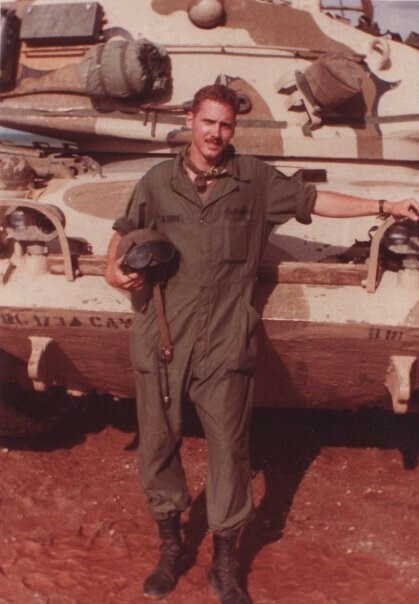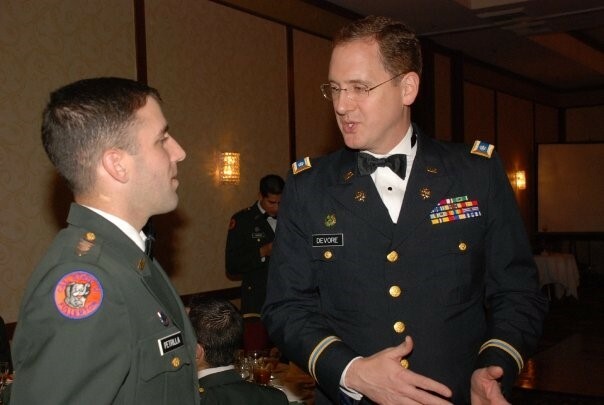I enlisted in the U.S. Army in February 1983 at the age of 20. I was motivated to do so for two reasons.
First, the draft had ended 10 years earlier. If America and our Constitution were to be defended, someone had to do it, and having been a high school athlete and avid sportsman, I figured the Army could use a few decent marksmen who were in good shape.
Second, we were in the height of the Cold War. Afghanistan, Iran, and Nicaragua all fell to hostile powers in 1979 when I was a junior in high school. The Soviet military buildup looked unstoppable. And when President Ronald Reagan sought to answer the communist challenge, I decided to do my part.
One of my uncles, a Vietnam War-era Air Force veteran—he was a navigator and would retire a major—urged me not to join. “It won’t benefit you at all. It will burn up your time and hold back your civilian career.” Looking back 38 years later, he may have been right. Nevertheless, when I was commissioned an officer in 1985, I asked him to administer the oath of office to me:
“I, Charles DeVore, do solemnly swear that I will support and defend the Constitution of the United States against all enemies, foreign and domestic; that I will bear true faith and allegiance to the same; that I take this obligation freely, without any mental reservation or purpose of evasion; and that I will well and faithfully discharge the duties of the office on which I am about to enter. So help me God.”
During my basic training at Ft. Knox in the summer of 1983, I ended up earning an Expert’s Badge in rifle (I had the second-highest score in the battalion) and in grenade—evidentially all that shooting and sports in high school helped out.
Only eight months after I enlisted, America invaded Grenada, a small island nation in the Caribbean that had suffered a violent Marxist coup when the communist People’s Revolutionary Government turned on itself, putting U.S. citizens at risk. Codenamed Operation Urgent Fury, the invasion marked the first time since World War II that a nation that had been in the grip of Soviet-aligned communism was brought back to freedom. Rather than simply be content with coexisting with Soviet communism—détente—President Reagan sought to win by rolling back the “Evil Empire.” I was game for winning and proud to play a small part by serving in uniform.

Then-Cadet DeVore standing in front of his M60A1 tank as a cavalry platoon leader with the 1st of the 3rd Armored Cavalry Regiment in Ft. Bliss, Texas in 1984.
Most of my military career was spent in field units in the Reserve and National Guard. My assignments included DIA intelligence analyst in D.C.; U.S. Southern Command J-2 (intelligence) staff in Panama City (I was carjacked by Panamanian strongman Manual Noriega’s paramilitary goons on my first day of duty); XVIII Airborne Corps G-2 (intelligence) staff at Ft. Bragg; All-Source Intelligence Chief for the National Training Center Opposing Forces in support of the First Gulf War; headquarters battery commander (leading 78 soldiers) of 640th Military Intelligence battalion; mechanized brigade combat team S-2 (intelligence) and S-3 (operations and training), armor battalion S-2, and State of California Deputy J-1 (personnel) for the National Guard.
Other than the carjacking in 1988, the only time I was in imminent danger from something other than training accidents was during the 1992 Los Angeles riots, when I was on active duty for 18 days, about a week of which was in South L.A. amid burning cars and smoldering, looted businesses. Some 63 people would be murdered or die as the result of the riots, with 2,383 injured and 12,111 arrests on top of some $1 billion in property damage.
By comparison, the month of national unrest in May and June of 2020 following the death of George Floyd in police custody led to the deaths of at least 25, with more than 2,000 injuries (including law enforcement), more than 14,000 arrests and up to $2 billion in property damages. Accounting for inflation, the paroxysm of violence in L.A. in 1992 equaled or exceeded last summer’s urban unrest.
By the time we were attacked on 9/11, I was a major, serving as the S-2 (intelligence staff officer) for an armor heavy brigade combat team of a little more than 2,000 soldiers. Because of my intelligence specialty, I was soon put under “stop-loss” orders, meaning, I couldn’t quit if I wanted to, and I couldn’t transfer to another branch (specialty). I was in the process of becoming an armor officer to go on the path to becoming an XO of an armor battalion and eventually, its commander, but the stop-loss put an end to that ambition.
By 2005, was transferred to California’s National Guard headquarters in Sacramento. A year later, I was promoted to lieutenant colonel.
By the time I transferred to the retired reserve in 2007, some 40% of my commissioned officer colleagues had “combat patches” on their right shoulders, signifying their service in Iraq or Afghanistan.

Lieutenant Colonel Chuck DeVore as the guest speaker for the Cal State Fullerton ROTC dining in in 2008.
I still hold my commission in the U.S. Army—if the nation ever needs a too old, too heavy, obsolete officer, I’m there—though I’m not as fast nor can shoot quite as straight as I used to.